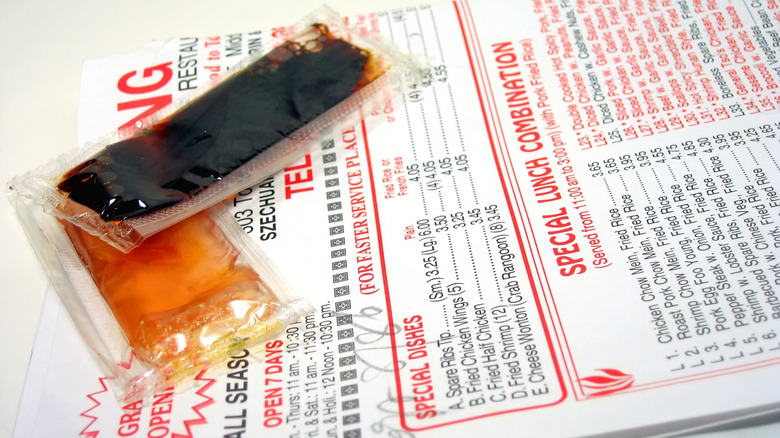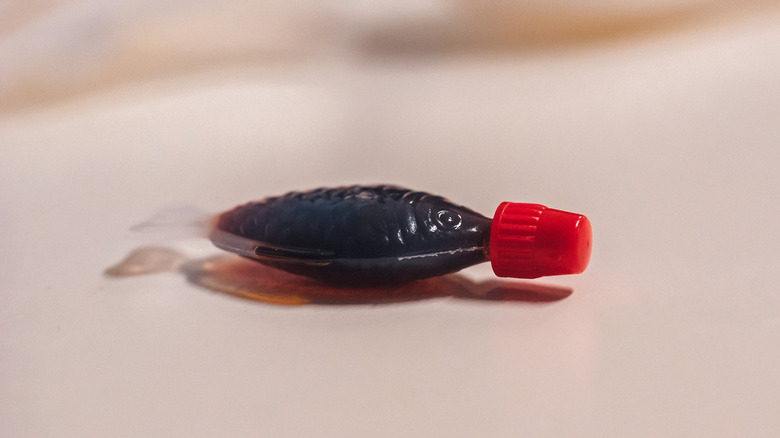The Messy Evolution Of Soy Sauce Packets
Tear open a soy sauce packet and whether you're ready or not, the salty condiment will go everywhere. It's America's third most popular condiment, behind only mayonnaise and ketchup. And despite decades of innovation and evolution, it has remained one of the messiest, too.
Soy sauce itself is an ancient food, with origins tracing back more than 2,000 years. As for the packets, though? We have no idea who invented them — but we do know they've always been messy.
Serving soy sauce in packet form was popularized in the 1960s by Howard Epstein, who founded Kari-Out, now one of the top soy sauce packet brands worldwide. He certainly modernized the packets' design, taking inspiration from tea bags and freeze-pop packaging — but he does not claim to have invented them. In fact, more than a decade prior, two men named Harold M. Ross and Kaplan Yale were already trying to solve the problem of sauce getting everywhere.
In 1955, they filed a patent for a packet design that would stop liquid flow as soon as pressure was released. However, the invention, which resembles an eyedropper, never caught on for soy sauce, as the design is better suited for thicker sauces like ketchup. And Epstein's version was likely cheaper to produce, too.
Now, things could be changing. Thanks to several new ideas, soy sauce packets' next evolution could be cleaner.
How can we make a less messy soy sauce packet?
The messiness of soy sauce is not a new problem, as the 1955 patent suggests. But solving it could be game-changing, especially for travelers — bringing your own sauce to add to airplane food is a genius hack, but a risky one, too.
In 2008, consultant Gary Murphy devised a small fish-shaped soy sauce container with a narrow screw-on cap — helpful both for controlling the flow and also for cutting down on wasted soy sauce. Although his company Little Soya no longer exists, the soy sauce fish caught on, from Las Vegas to the International Space Station.
Other types of mess-free condiment packets have been successfully introduced in other countries, too. In Japan, a combo ketchup-and-mustard packet dispenses both condiments without requiring any ripping or tearing. So looking back at the messy evolution of soy sauce packets — probably with a splotchy brown stain on our shirt — we're left asking, why haven't we learned from these genius sauce packets?

